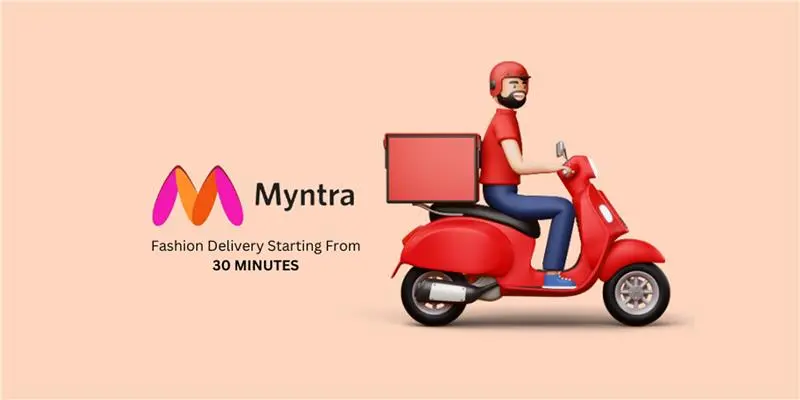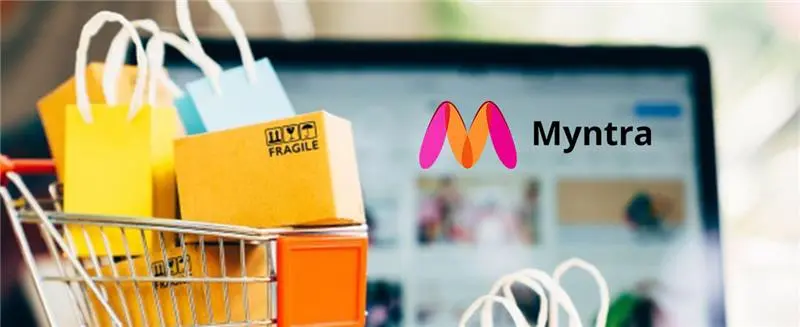Necessary Always Active
Necessary cookies are required to enable the basic features of this site, such as providing secure log-in or adjusting your consent preferences. These cookies do not store any personally identifiable data.
|
||||||
|
||||||
|
||||||
|

The landscape of B2B commerce is undergoing a radical transformation, and nowhere is this more evident than in the fashion industry. With digital-first supply chains, evolving customer expectations, and the growing need for inventory agility, businesses are demanding faster, smarter, and more reliable solutions. At the forefront of this revolution is Myntra M‑Now, a pioneering initiative by Myntra that promises fashion fulfilment in under 30 minutes for B2B clients.
In this blog, we explore how Myntra M‑Now’s B2B fashion service is setting new benchmarks in B2B logistics, the technology powering Myntra’s quick fashion delivery, and its broader impact on the fast fashion supply chain in India.
Launched as a hyperlocal delivery solution, Myntra M‑Now for retailers aims to address the urgent inventory needs of B2B customers, including retail partners, franchise stores, and resellers. With an ambitious 30-minute delivery promise, the initiative is designed to enable rapid restocking, flexible inventory models, and last-minute delivery during high-demand scenarios.
Unlike traditional B2B supply chains that work on bulk ordering and long lead times, Myntra M-Now’s 30-minute delivery introduces a model that is real-time, decentralized, and ultra-fast. By leveraging Myntra’s robust fashion catalog, regional fulfillment centers, and AI-driven logistics intelligence, the platform facilitates seamless reordering and demand-response restocking.
This system ensures businesses can adapt to demand fluctuations without overstocking or risking frequent stockouts. The flexibility and speed offered by M‑Now align perfectly with the dynamic nature of fashion, where trends can shift overnight.
Coverage began in key metros and is expanding through a network of dark stores placed near dense retail clusters. Availability varies by city and PIN code, so retailers check eligibility inside the portal or app before placing a replenishment order. As new nodes come online, nearby localities are added to the service map.

Delivering fashion products within 30 minutes is no small feat. Myntra achieves this by orchestrating a sophisticated interplay of technology, data science, and logistics infrastructure. Here are some of the core components powering Myntra’s express delivery service:
All of these elements operate cohesively within a smart logistics engine that adapts in real time to ensure speed and accuracy, regardless of time or traffic conditions.
Fast replenishment focuses on high‑velocity SKUs that are stocked at nearby nodes. Size, fragility, and local demand determine which items are available for express dispatch. If a product is not in the nearest node, the system offers the next fastest delivery option from the network.
The introduction of Myntra M‑Now has profound implications for the way B2B partners manage their operations:
Additionally, Myntra’s partners can rely on a more stable supply chain that enables them to experiment with new brands, SKUs, or seasonal lines without the usual risk of overcommitting to bulk orders. These are some of the key Myntra M‑Now benefits for wholesalers.
Partners set low stock thresholds and receive alerts when popular sizes or colors need a quick top‑up. Store teams place small, frequent orders to keep shelves full without blocking working capital. During events or sudden trend spikes, managers trigger express replenishment and track SLAs in real time.

The operational backbone of Myntra M‑Now is its hybrid logistics network that blends in-house delivery capabilities with third-party logistics partners. Here’s a look at how it functions:
1. Order Trigger: A retailer places a replenishment order via the B2B portal or API.
2. Nearest Node Identification: The system identifies the closest fulfillment center with the required stock.
3. Instant Pick-Pack-Ship: A dedicated team handles order picking, packaging, and dispatch within minutes.
4. 30-Minute SLA Monitoring: The system tracks SLA (Service-Level Agreement) compliance in real time, issuing alerts for delays.
5. Delivery Confirmation: Digital POD (Proof of Delivery) is captured and synced with the retailer’s system.
By maintaining tight operational discipline and leveraging automation, Myntra ensures high order accuracy and efficiency, even at scale. This enables a new level of agility in B2B fashion logistics in India.
The portal shows the target delivery window and any factors that could affect it, such as weather or peak traffic. If an order misses its window, the system flags the cause and recommends a fallback option so the store can plan the floor with confidence.
Myntra M‑Now is more than just a logistics upgrade; it is a strategic moat in the hypercompetitive fashion commerce landscape. Here’s why:
As more B2B partners begin to expect speed as a baseline offering, Myntra’s early investment in Myntra last mile delivery solution gives it a critical edge that is hard to replicate.
Ensure address details and store coordinates are accurate, confirm receiving windows, and set approval rules for express orders. Map the top twenty SKUs by throughput so the local node can keep the right mix ready for fast replenishment.
Despite its success, Myntra M‑Now faces several challenges:
Overcoming these barriers will require Myntra to innovate not only in technology but also in sustainable practices, potentially incorporating EVs, recyclable packaging, and regional partnerships to scale responsibly.
Myntra M‑Now represents a broader shift in how B2B retail will function in the next decade. The success of this model indicates that:
This model also opens up opportunities for deeper collaboration between brands and retailers. From co-managed inventory to real-time sales analytics, Myntra M‑Now could evolve into a full-service B2B operating system and redefine the Myntra delivery model 2025.
In an industry where timing is everything, Myntra M‑Now is rewriting the rules of fashion fulfilment. By leveraging hyperlocal infrastructure, intelligent algorithms, and real-time connectivity, Myntra has built a B2B model that is not only fast but transformative.
For retailers, this means higher responsiveness, better margins, and a more resilient supply chain. For Myntra, it signifies a future where Myntra quick fashion delivery is measured not in days or hours, but in minutes.
Myntra M‑Now isn’t just a logistical feat—it’s a blueprint for what the next generation of fast fashion supply chain in India will look like: connected, immediate, and intelligent.
Where is M‑Now available
Availability is city and PIN code specific. Partners can check eligibility inside the portal or app and see when a locality is added as new nodes go live.What qualifies for 30‑minute delivery
High‑velocity products that are stocked at the nearest node. The catalog varies by location and demand. If a product is not in the local node, the system offers the next fastest option.How are SLAs monitored
The system tracks the order from pick to handoff, shows the target window, and flags delays with reasons. Store teams see status updates in real time.How should partners get started
Verify store geolocation, set approval rules for express orders, and share the list of top moving SKUs so the nearby node can plan inventory.
Sign up to receive our newsletter featuring the latest tech trends, in-depth articles, and exclusive insights. Stay ahead of the curve!